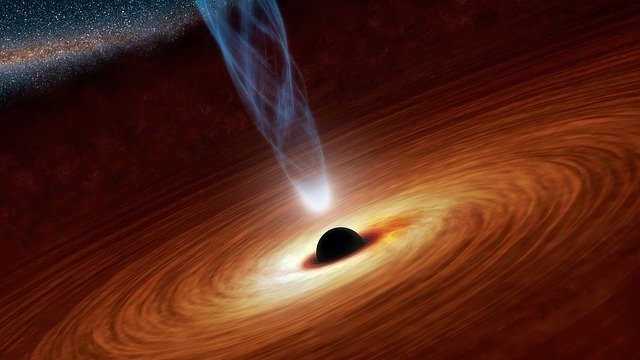It has long been known how to calculate a black hole shadow at any distance. Now Russian physicists have discovered how to calculate a black hole shadow at any distance in an expanding Universe.
Russian physicists from the Space Research Institute of the Russian Academy of Sciences and the MEPhI National Research Nuclear University found an approximate analytical solution to calculate for the black hole shadow size valid for any distance (https://doi.org/10.1142/S0218271820500625). According to the solution’s authors, it can be used for any cosmological model of the Universe.
The modern astrophysics believe that there are supermassive black holes with a huge mass - millions or even billions of solar masses – in the center of most galaxies. The black hole itself is invisible, but it can be “seen” as a black spot against bright space objects. This spot is called the black hole shadow. In April 2019, Event Horizon Telescope (EHT) (https://eventhorizontelescope.org) presented a unique “photo” of a black hole: the results of observing a supermassive black hole shadow in galaxy M87.
The very small angular size of the black hole shadow is the main difficulty in observations, so a very high angular resolution is necessary. According to the EHT authors, the resolution they reached would be enough to “read a newspaper in New York from a sidewalk café in Paris.”
According to Professor Gennady Bisnovatyi-Kogan, an author of the analytical solution for the black hole size, “we study black hole shadows that are located at enormous – cosmological – distances. It seems like these shadows must be very small. In our everyday life, we are used to the fact that the further away an object is, the smaller its angular size. However, at cosmological distances, the Universe’s expansion starts to influence the propagation of light. The expansion of the Universe results in the fact that instead of decreasing the observed angular size of an object begins to grow as redshift increases (a figure used in cosmology to measure an object’s distance in an expanding Universe). This means that very distant black hole shadows can have large enough angular sizes to be observed by next generations of telescopes.”
The 2020 research continues the series of previous articles.
The 2018 research of Gennady Bisnovatyi-Kogan and Oleg Tsupko (Physical Review D) found a solution for a Universe with any set of parameters.
The 2020 research of Tsupko, Fan, and Bisnovatyi-Kogan (Class and Quant Gravity) suggested using distant black hole shadows as a standard ruler to study cosmology.
Gennady Bisnovatyi-Kogan notes that “standard ruler in cosmology means space objects of known size. The effective linear size of a black hole shadow is mostly defined by its mass. This means that if we can measure the exact mass of a black hole, we know the physical size of its shadow. When we know this effective physical size and measure the shadow’s angular size, we can define the distance to the black hole. When we know the distance and the measured redshift, we can study the cosmological model, or find out cosmological parameters. In order to use this method in practice, it is necessary to increase telescopes’ angular resolution by one order of magnitude. It is also necessary to define the exact and independent masses of black holes.”
In the latest research (Tsupko, Bisnovatyi-Kogan, Int J of Modern Physics D, 2020), the physicists obtained a continuous approximate analytical solution valid for any distance between observer and the black hole. The idea for the solution is based on the method of matched asymptotic expansions used to solve differential equations.
According to the authors, on the one hand, the Universe’s expansion can be neglected near a black hole compared with the black hole’s strong gravitation. On the other hand, being far away from a black hole, we can neglect its gravitation field compared with the effect of the universe’s expansion on the rays of light. If there is an area where both these solutions are correct, then they can be matched, as mathematicians say. Moreover, this method provides a continuous solution valid for any distance to a black hole.
The described method makes it possible to provide mathematically rigorous grounds that the solution for large distances found earlier is correct. The article (Int J of Modern Physics D, 2020) was supported by the Russian Science Foundation’s grant No. 18-12-00378.
